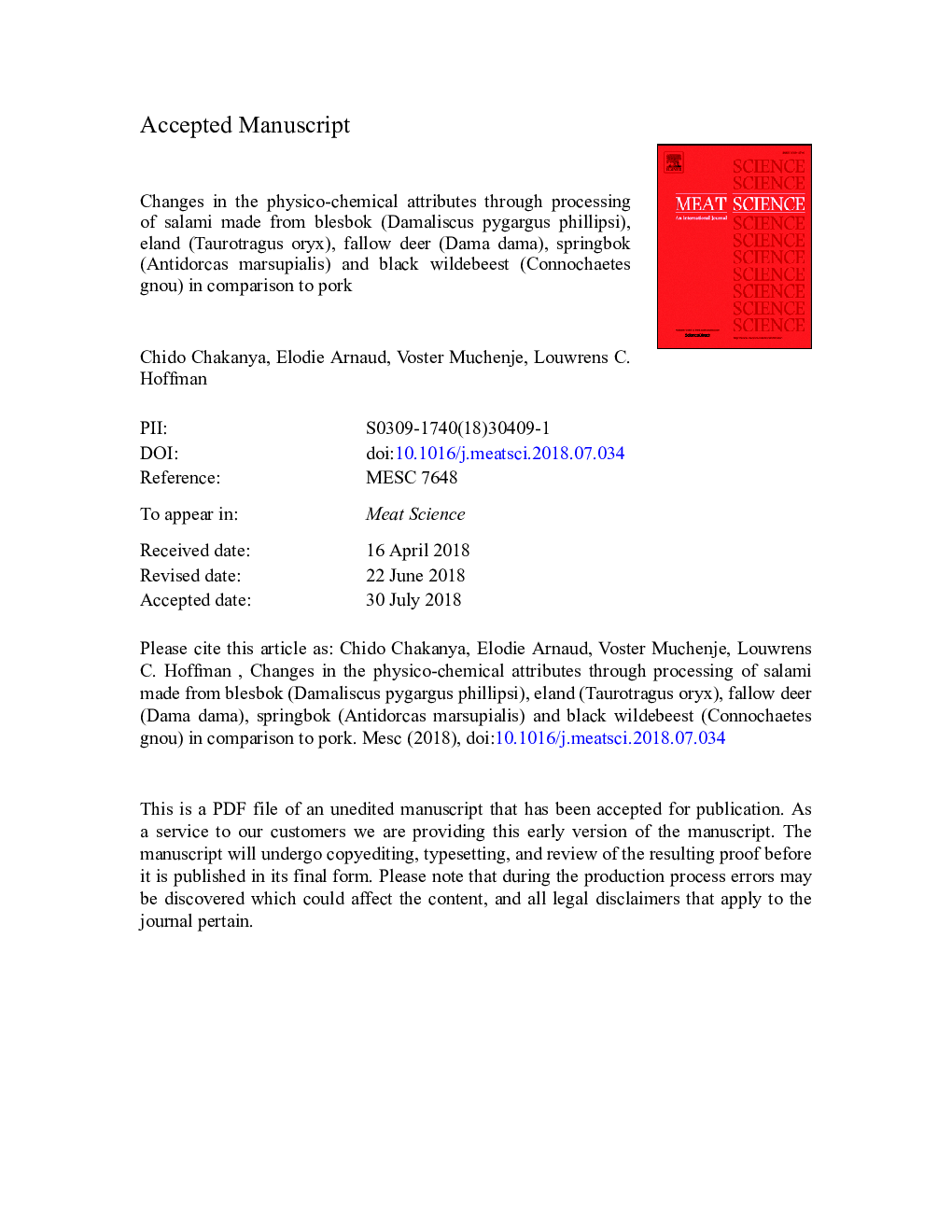| Article ID | Journal | Published Year | Pages | File Type |
|---|---|---|---|---|
| 8502296 | Meat Science | 2018 | 30 Pages |
Abstract
Drying kinetics and changes in proximate composition, pH, salt content, water activity (aw) and lipid oxidation through processing of salami made using five different game meat species were evaluated and compared to pork. Eight batches of salami from each species were made and sampled for analysis throughout processing. Processing time was a significant factor on all measured attributes whilst species affected (Pâ¯â¤â¯.05) pH and moisture but not drying kinetics. Black wildebeest meat exhibited higher (Pâ¯â¤â¯.05) pH than pork and other game meat (6.30 vs 5.63-5.80), which translated to higher (Pâ¯â¤â¯.05) salami pH throughout and at the end of processing (5.77). Final pH of all other salami ranged from 5.01 to 5.28, aw ranged from 0.88 to 0.92. TBARS remained lower than 1â¯mg MDA equivalent/kg. The study suggests that salami from these game species, excluding black wildebeest, can be produced using the same processing parameters as conventional pork salami and obtaining similar physico-chemical attributes.
Related Topics
Life Sciences
Agricultural and Biological Sciences
Food Science
Authors
Chido Chakanya, Elodie Arnaud, Voster Muchenje, Louwrens C. Hoffman,
